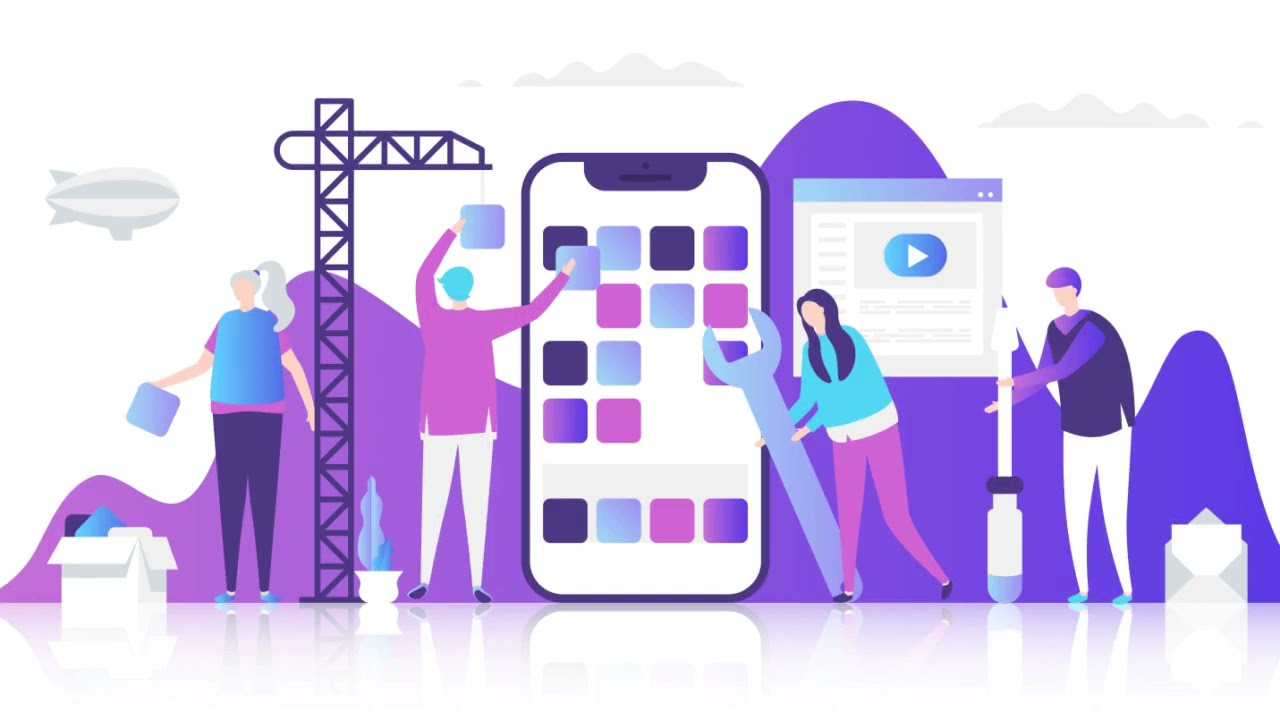What is Product Discovery in the Development of Mobile Apps
 Syed Zohaib Akhter
Syed Zohaib Akhter
Have you ever questioned why certain items succeed while others are wiped from the market? In addition to chance, there are a few strategies that assist companies create customized goods.
One of them is Product Discovery, which helps teams identify the features that are essential to include and target people in order to create a compelling product. This article may help you get more acquainted with Product Discovery if you are a business or product owner.
In the context of developing mobile apps, what is Product Discovery?
When developing a bespoke mobile app, the first step is product discovery, which ensures that you understand your target market and that your app addresses a need in the market.
Product discovery is based on continuously testing ideas and solutions and learning how to modify them to meet consumer demands. This procedure should also guarantee that your committed team can implement your ideas in addition to ensuring that you understand the demands of the end customers.
Why not begin development without first testing the waters?
Although the process of product discovery is optional, would it make sense to begin expensive development without doing enough research?
According to the "1:10:100 rule" found in the Theory of Quality Management, failure is more expensive than correction, and prevention is more expensive than repair. Spending $1 at the start of the project makes more sense than spending $10 fixing errors made throughout development and an additional $100 after the software is released. It makes more sense to prevent than to fix. Compared to launching a pointless application, Product Discovery is completely free of charge.
What is the structure of the Product Discovery process?
Product discovery may be approached in a variety of ways, and each session should be customized to meet your specific company objectives. Whether you need a two-hour meeting, a three-day workshop, or a two-month phase to solidify your business strategy, you should concentrate on the following areas:
Formulating a plan. What do you want to achieve? What do you hope to accomplish? Focusing on the issue of prospective consumers. Who is the user? What kind of issues are they facing? How can we assist them? Generating ideas for solutions. How can the issue be resolved? What would such a solution accomplish? Which option is the best? Making prototypes. What is the experience of my users? Is the solution to my liking? Going over concepts. Are your concepts sufficient? What are the opinions of my users about them? Can I really fix their issues? Focusing on specific solutions. Which concepts will we put into practice? Setting priorities. Which features should be added first? Making plans. What does our MVP (Minimum Viable Product) cover?
1. Clearly state your objective, target, user, and issue.
Understanding the issue area should be the main goal of product discovery. Spending time elucidating the issue you are attempting to resolve is crucial. It may seem tempting to get right into an ideation session and talk about certain concepts, but try to take a step back and fully identify your objective, target audience, and possible issue first.
2. Concept After identifying a problem area
The team moves on to the ideation phase, where they explore solutions. Here, quantity is more important than quality. Participants are able to expand on one other's ideas. For instance, what would you do if your user is a patient and you wanted to remind them to take their medication? Pop-ups, buzzing alarms, calendar reminders, notifications, and text messages? It's time to let your imagination run wild and go with the flow, not to judge and assess.
3. Examine and choose solutions
After that, we evaluate the solutions and choose the finest ones by addressing the following queries: is it able to resolve the issue? Is it possible? Can we construct it? As in the last case, we decided that because our user is an older patient who is unfamiliar with online calendars, maybe utilizing push alerts from their medications would be a better option.
4. Set feature priorities and plan the MVP's reach.
It's time to outline the scope of the Minimum Viable Product and prioritize the features when the best solution has been crystallized.
What is the connection between product strategy and product discovery?
Although it is an excellent place to start, having a brilliant concept is not a guarantee of success. Making the correct strategic choices is the first step towards a successful product. A time-boxed Product Discovery session is one of them.
Developing a new Product Strategy during a dedicated Product Discovery phase may help you if you are considering developing a new mobile application or if you want to improve your existing one.
The issue of whether your product has commercial potential should be answered after important user experience and architectural risks have been validated. If so, you should conclude your Product Discovery by responding to the following queries: Solution: What is the main issue that your product is trying to address? Alternatives: Do your users presently have any other options for resolving that issue? Value: What are your product's main selling points? Distinctiveness: What distinguishes your product from both direct and indirect rivals? Following the validation of your vision by market research, company objectives, and a value proposition, you may go on with:
Product Roadmap: Describe how and when you plan to carry out the strategy over a certain time frame. Do you have any set release dates or milestones? Backlog of Products: What must you do to fulfill your company objectives? Are there any obstacles? Are you aware of the priorities?
Is a Product Discovery phase necessary for all mobile apps?
Not much, but if you previously understood the "1:10:100 rule," why would you skip that section? Naturally, you may be the fortunate one to successfully close the gap first if you are eager to get started on the growth phase.
But given the potential financial consequences of relying only on your intuition, would you leave the outcome of your application up to chance? Finding out during or after development that your product's features need to be upgraded or that Flutter does not work well with the app design, or that your rivals were quicker to release more appealing products, may be discouraging.
If you're a business or product owner with a track record of making wise choices, you may hate the thought of working with the cross-functional team to create the perfect product strategy. It seems that exposure to other viewpoints—business, technological, social, economic, etc.—may broaden your perspective and serve as a preliminary testing ground. This viewpoint is much more forgiving than market circumstances and target customer input.
In response to the issue of whether doing product discovery is always advantageous for you, the answer is unquestionably yes. Is it always required? You may continue with development and Product Backlog management when you have a solid understanding of your product and a solid Product Vision and Strategy.
At what stage of the development process is Product Discovery most effective? ALWAYS is the appropriate response to provide.
Naturally, the first idea is that the project's first phase is the ideal time to customize the product. It is advised, therefore, that you extend Product Discovery beyond your first days of the Product Vision process.
You will face several obstacles along the path to providing the goods in order to please your customers. You are going to constantly react to comments since you most likely have the most customer-centric attitude. The premise behind this technique is suggested, but it does not imply that you must repeat a Product Discovery session every Sprint.
Products are subjected to constant examination these days.
In addition to playing a significant role before development, product discovery may also be a component of product delivery. It may be used as part of a process to revalidate the development of a new feature by acting as the "inspect and adapt" tool.
Business apps development renovates operations by creating custom-designed solutions that accentuate productivity, boost up communication, and support data-driven decision-making for organizations of all sizes.
For whom is Product Discovery appropriate?
It's usually tempting to keep the development team occupied with their code rather than bothering them with dull business objectives or value propositions.
Thankfully, a cross-functional approach—in which every team member participates in the product creation process—occurs increasingly often these days. Why not take use of these different viewpoints?
Including representatives of the following competences in the Product Discovery phase would be very effective if you are considering developing a new application:
Technical: Platform-specific developers (such as those working on iOS, Android, backend, and quality assurance)
Business: Business Development and Business Analysis
Designers of UX and/or UI
Process: Product Owner, Scrum Master/Agile Coach, Delivery Manager, and
Process Manager
Stakeholders include the delivery manager, investor, and product manager.
Users to target
You receive a comprehensive viewpoint and immediate feedback on the concepts you want to put into practice since so many different competencies are involved.
Additionally, when team members become creators rather than contractors, they might acquire product responsibility. The whole team feels empowered, takes responsibility for the outcome, and owns the process. Finally, empathy that is sparked during the Product Discovery stage helps in understanding the consumer and raises the likelihood that their demands will be met.
Techniques for Product Discovery that have been shown to work Product discovery is approached from many different angles, and as a result, there are many distinct methods.
Given that it incorporates many of the best principles from human-centered design, Design Thinking may seem to be a new fad. By using this method, groups may come up with ideas in five steps:
Investigate the requirements of your users to show empathy. Define: Describe the requirements and issues of your users. Idea: Disprove presumptions and generate concepts Prototype: Begin developing solutions Test: Put your answers to the test. Other strategies, however, could also be helpful; try them out and mix them whatever your company finds most effective:
Tasks to be completed Goals and Important Outcomes (OKR) Riskiest Assumptions Test, or RAT
Impact mapping, event storming, domain storytelling, and inception In order to customize your product as effectively as possible, don't be scared to mix and try out various tools.
Conclusion. Keep trying to find out!
You can determine if your mobile app concept adds value to your company in a variety of ways. Prior to development, always attempt to address the commercial, social, economic, and technological risks associated with your future product.
Subscribe to my newsletter
Read articles from Syed Zohaib Akhter directly inside your inbox. Subscribe to the newsletter, and don't miss out.
Written by

Syed Zohaib Akhter
Syed Zohaib Akhter
A highly skilled software developer with a strong foundation in designing, developing, and maintaining software applications. Proficient in multiple programming languages and frameworks, including Java, Python, and JavaScript. Experienced in utilizing industry best practices and coding standards to deliver high-quality code. Collaborative team player with excellent problem-solving and communication skills, able to work effectively in cross-functional teams. Passionate about continuous learning and staying up-to-date with the latest technologies and trends in software development.